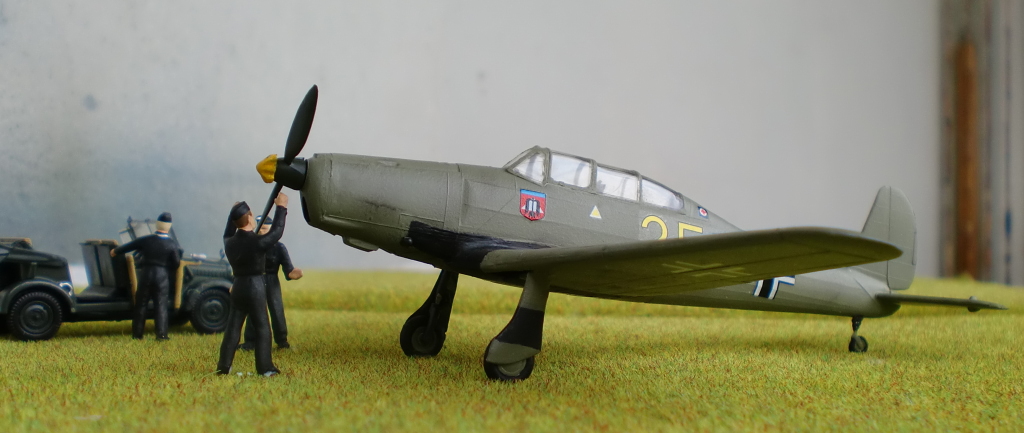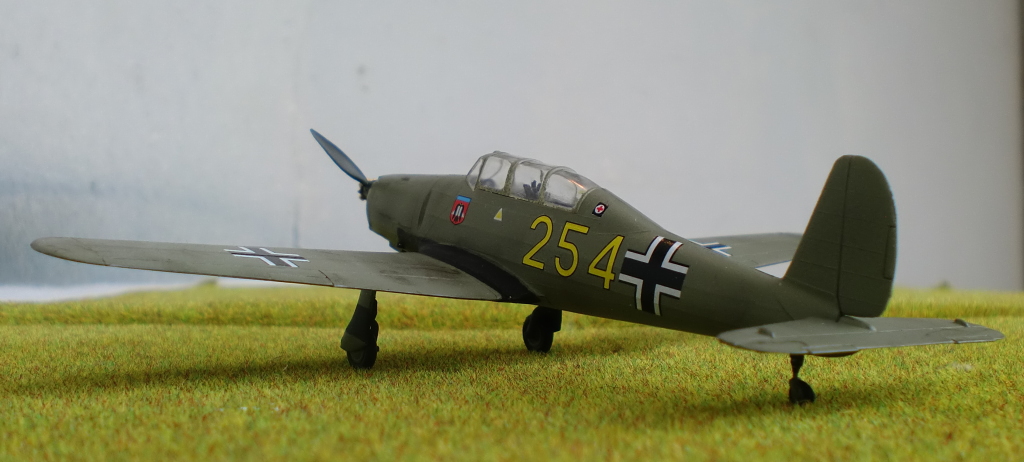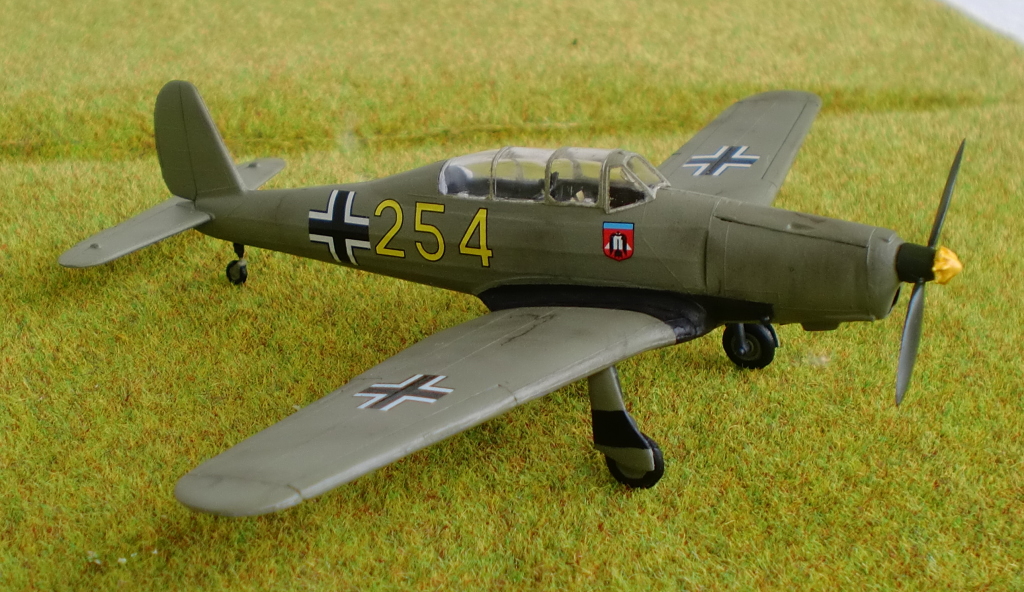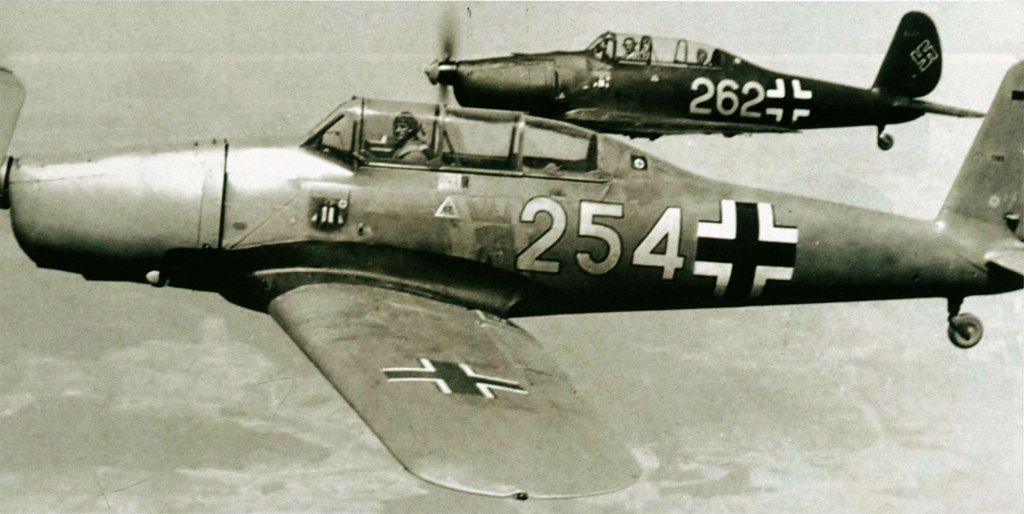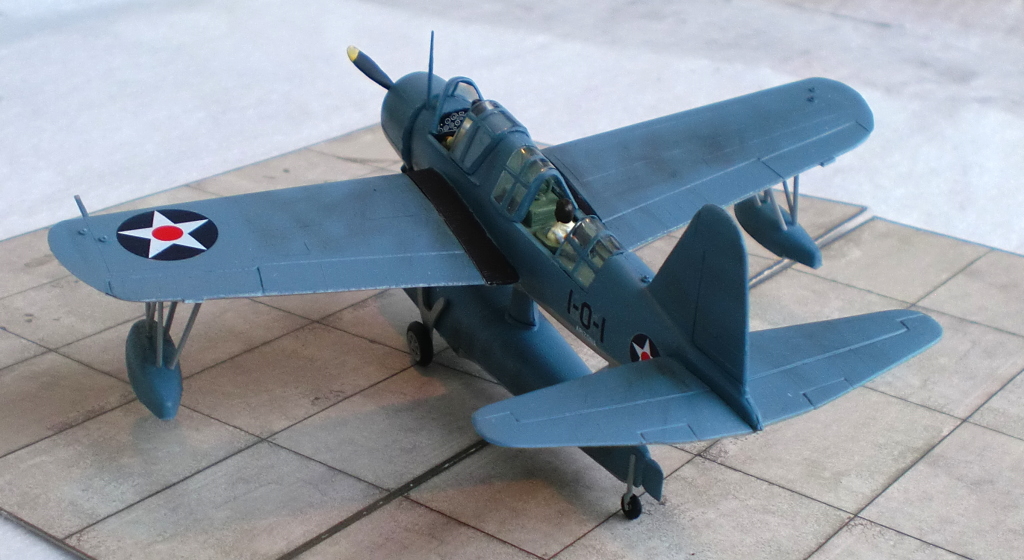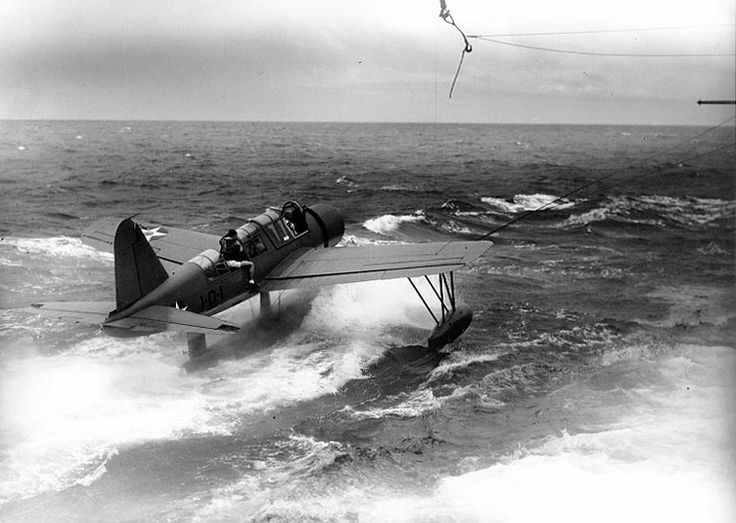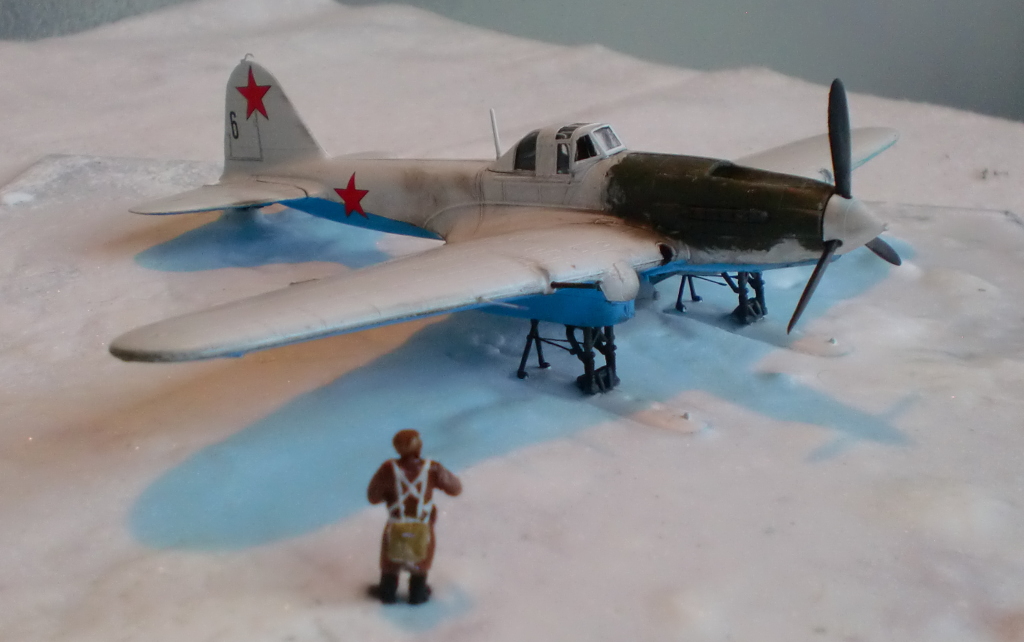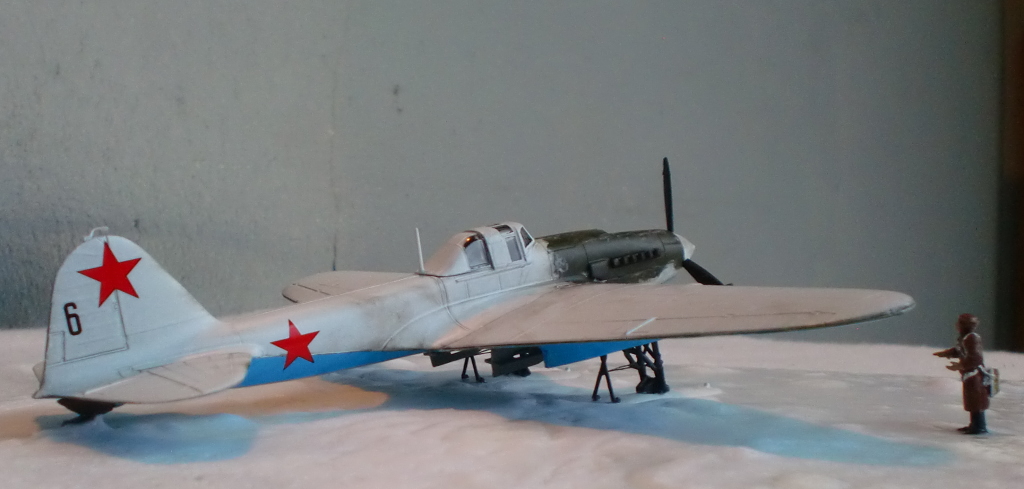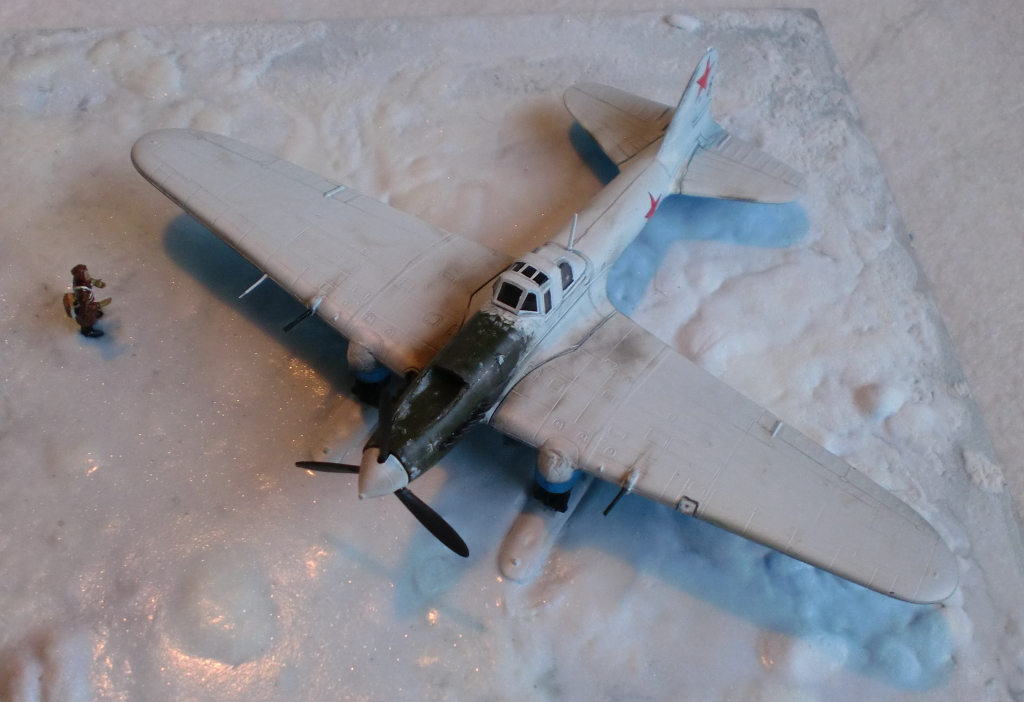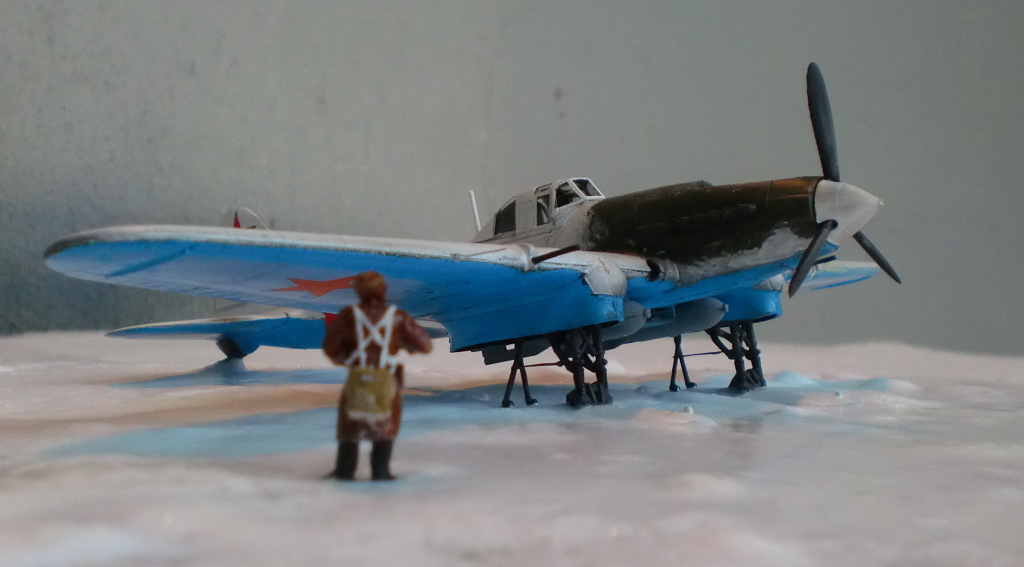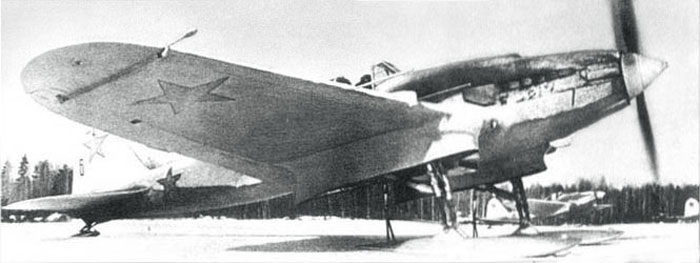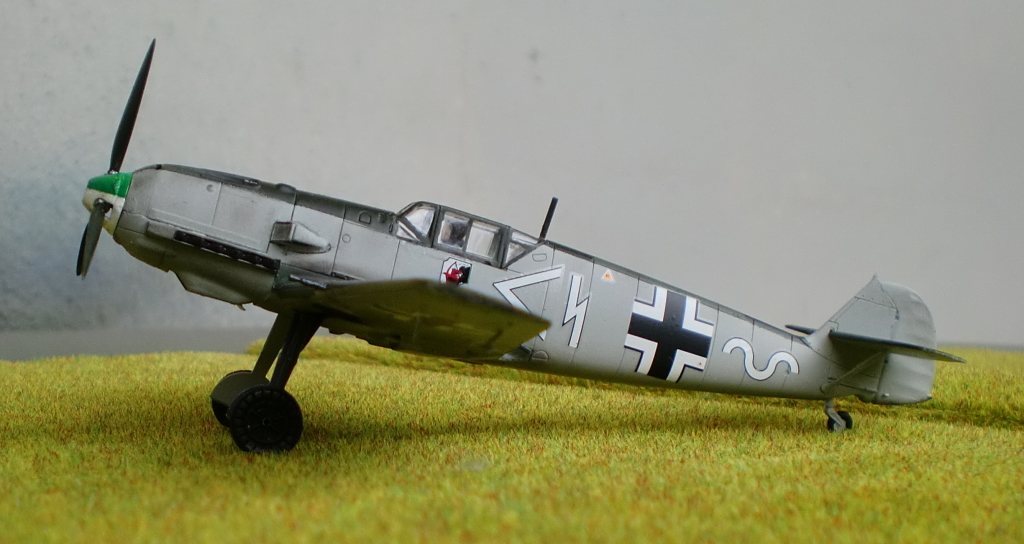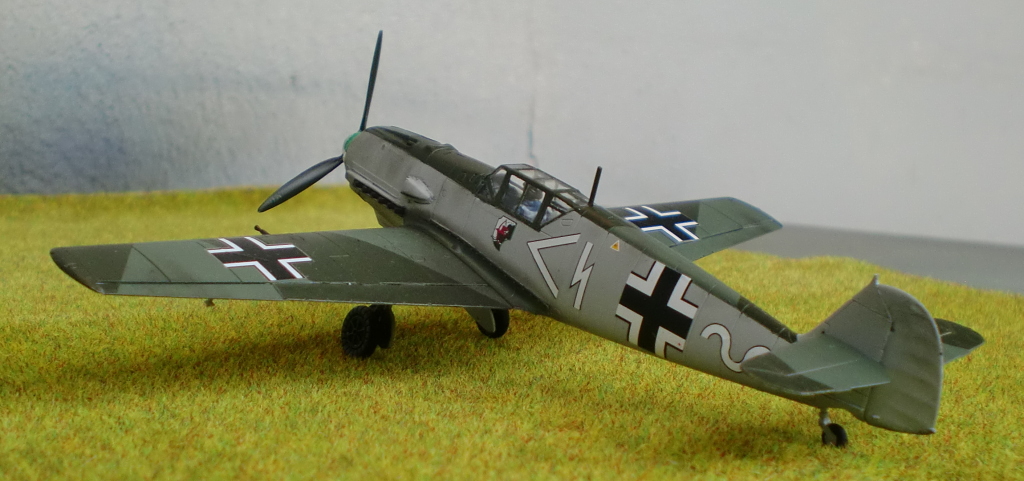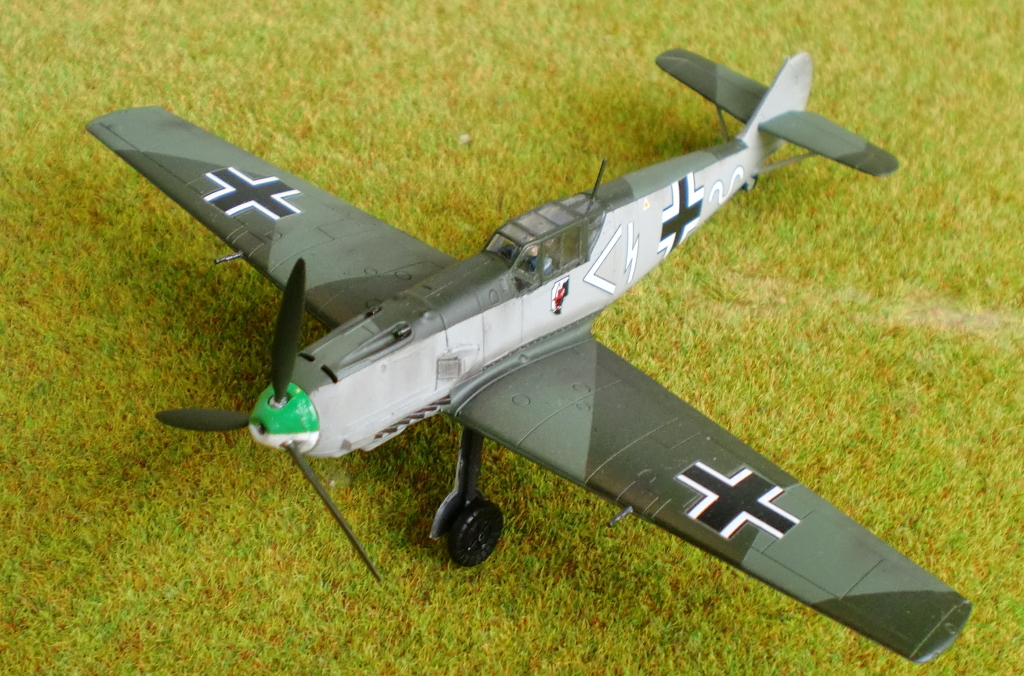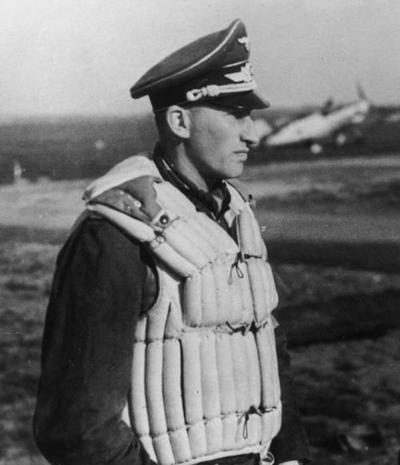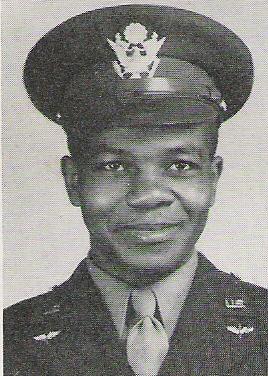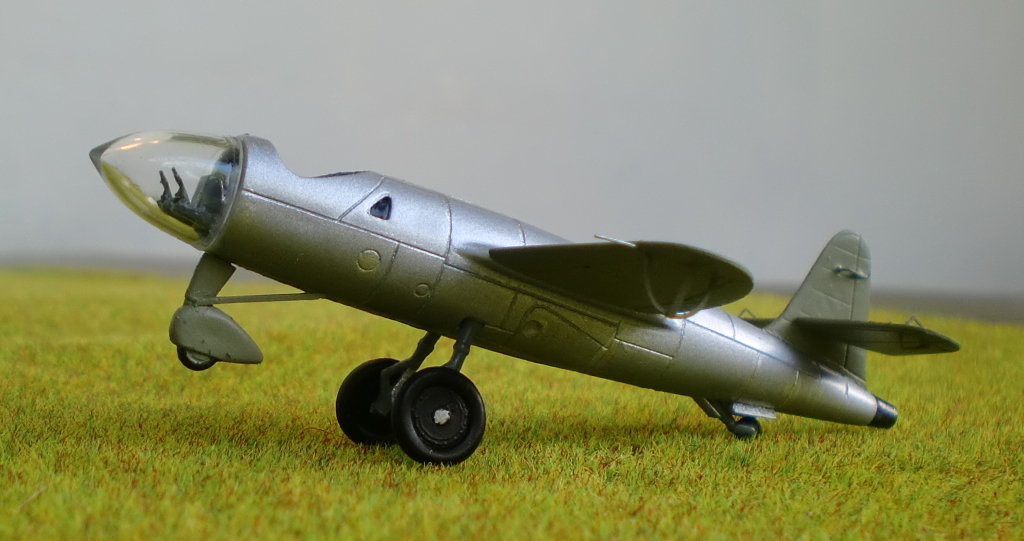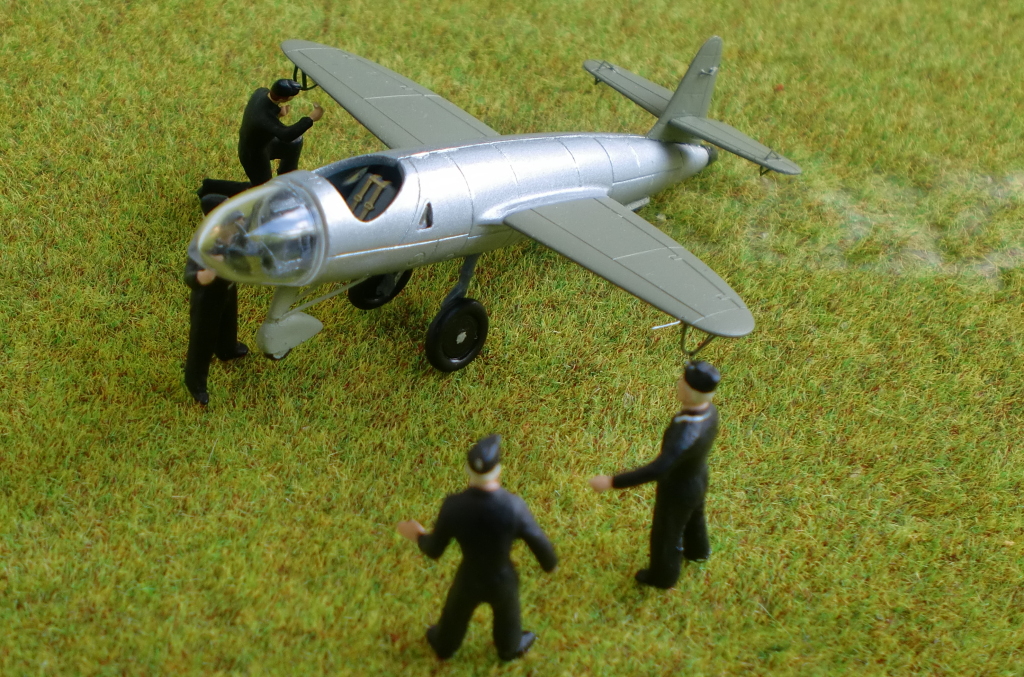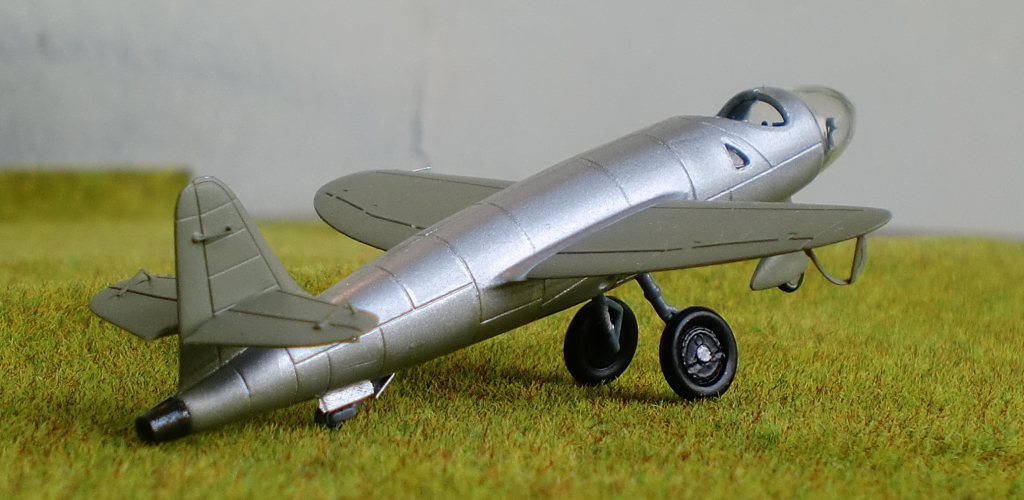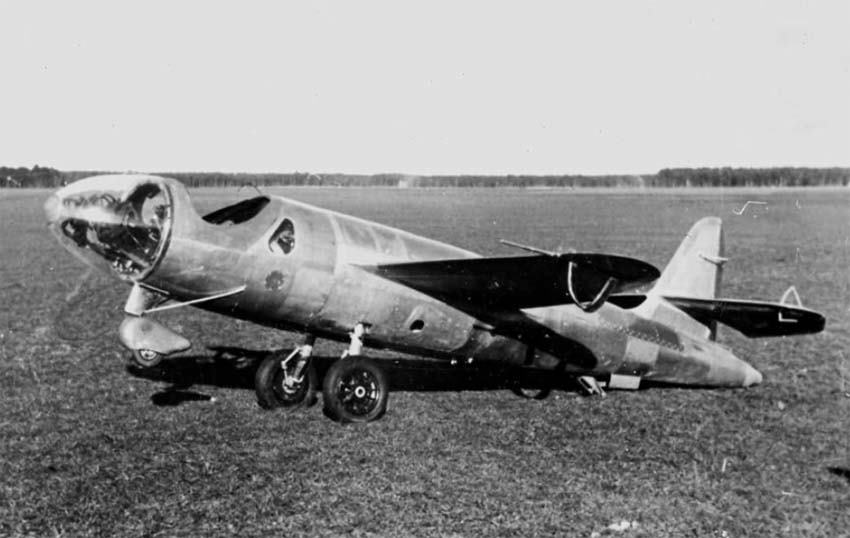Introduced in
1938, the Fiat G.50 “Freccia” (Arrow) was the first modern monoplane of the
Italian Air Force, the Regia Aeronautica. The Fiat A.74 radial engine in the
Freccia was also used for the Macchi MC200, a very similar looking fighter
aircraft (see page 1) that entered service shortly after the G.50. The
Macchi was slightly faster, while the Fiat was more manoeuvrable. Both
designs had one thing in common: they were already outdated when WWII began.
It was quite a challenge for the Italian pilots to get used to these new
monoplanes, as they were used to their CR.32 and CR.42 biplanes. The
enclosed cockpit orginally designed had to be removed with the second
production batch as the pilots hated it… Although the G.50 was a big step
forward in terms of performance, weaponry and armor protection were not;
they were basically unchanged compared to the biplanes. Although the G.50
performed well in the Spanish Civil War, only outclassed by the
Messerschmitt Bf109, the situation changed at the beginning of WWII, when
the Freccia had to face more serious opponents.
The baptism of fire for the G.50 was the Battle of Britain. Mussolini
decided to send an expeditionary force, the Corpo Aero Italiano (Italian Air
Corps), to assist the Germans in the fight over British skies. Arriving in
the fall of 1940, the aircraft of the 20 Gruppo/fighter group (like the one
modelled here) were stationed at different airfields in Belgium. However,
the Italian Air Corps was of little help for the Germans. The G.50 proved to
be to underpowered and slow, and seriously lacking in firepower. Pilots
suffered in their open cockpits, exposed to the bad Northern Europe weather
in the fall. Limited range was also a problem, so they posed no real threat
for the Royal Air Force. Italian Air Corps operations ended in the spring of
1941, and most remaining aircraft were sent to the North African campaign,
where they fared a little better, depending on the skill of the pilot. Most
G.50 were later converted to fighter-bomber or ground attack aircraft, and
only a few were still in service when Italy surrendered in 1943. Only one
G.50 is known to have survived to this date, currently under restauration at
the Museum of Aviation in Belgrad, Serbia.
However, the G.50 proved to be an efficent fighter aircraft with the Finnish
Air Force, especially in the early stages – a kill/loss ratio of 33/1 was
really impressive, although the aircraft of the opponent Soviets were even
older and their pilots badly trained at the time.
This Fiat G.50 belongs to the 20 Gruppo, 352 squadriglia (squadron), based
at Maldegem airbase in Belgium, in the Fall of 1940. It had an rather
unusual green/dark green mottle camouflage for operations in Northern
Europe. The heavy paint chipping around the cockpit area was caused by a
fabric cover that was used to protect the open cockpits.
This little ancient kit is from Airfix, and it is celebrating its 50th
Anniversary in 2017 ! Long since retired from the Airfix product range, this
kit is still easy to find. It is a basic as it can get, no cockpit details
and not much else, but that was quite common in the 1960s. Still a fun kit
and not that bad for a quick build. Decals are from Printscale.
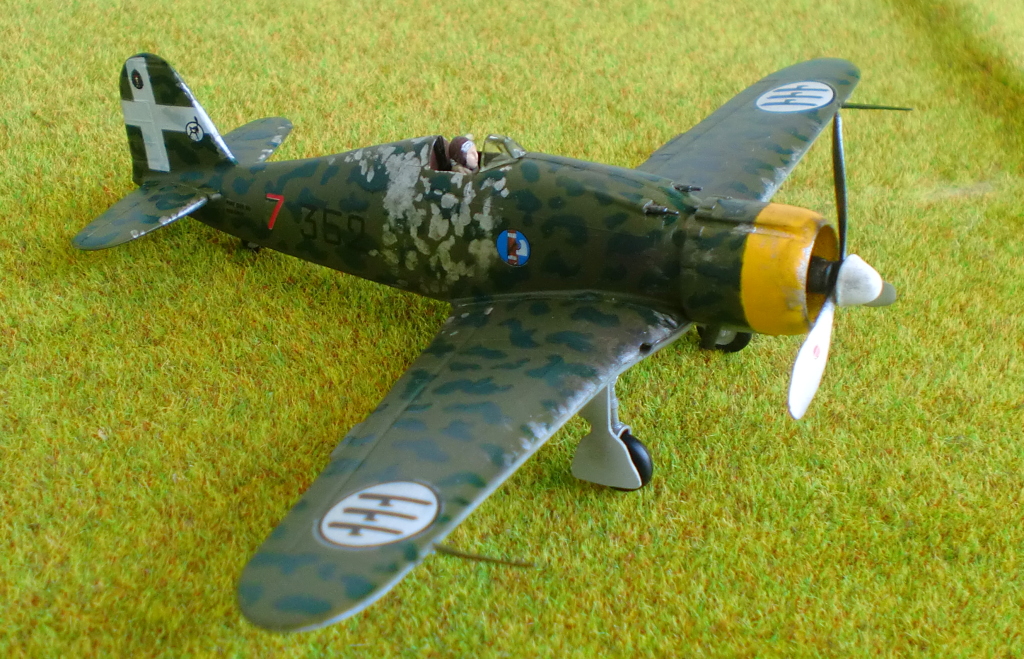
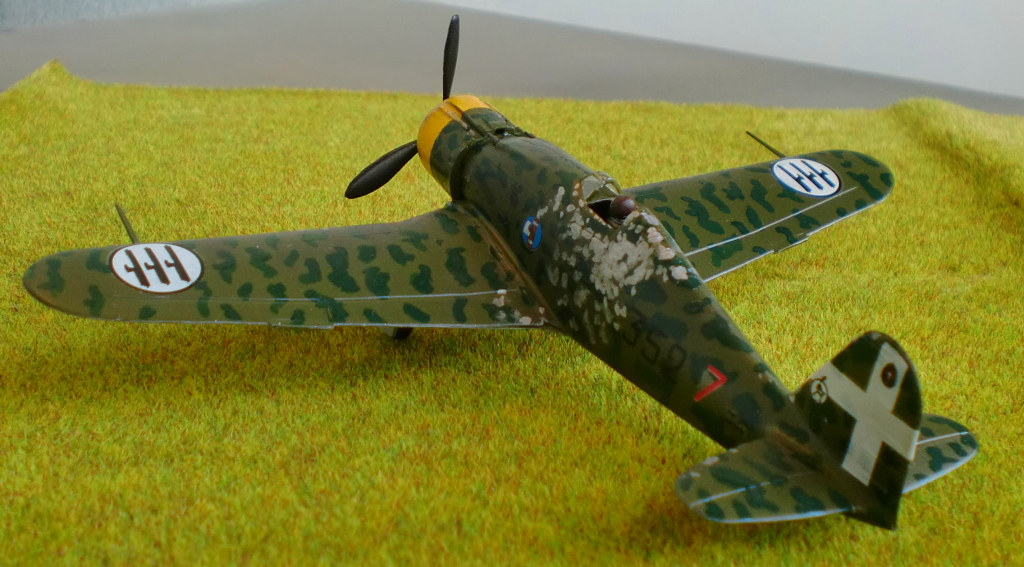
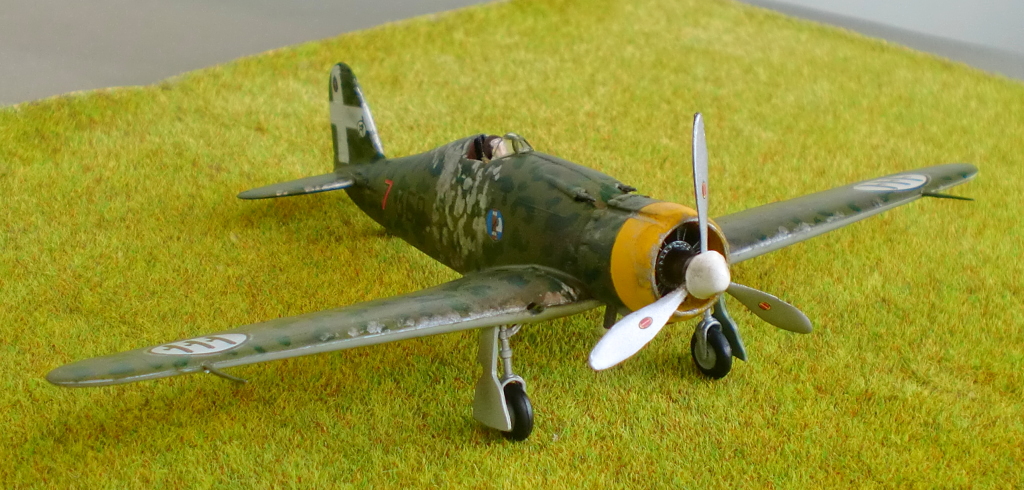
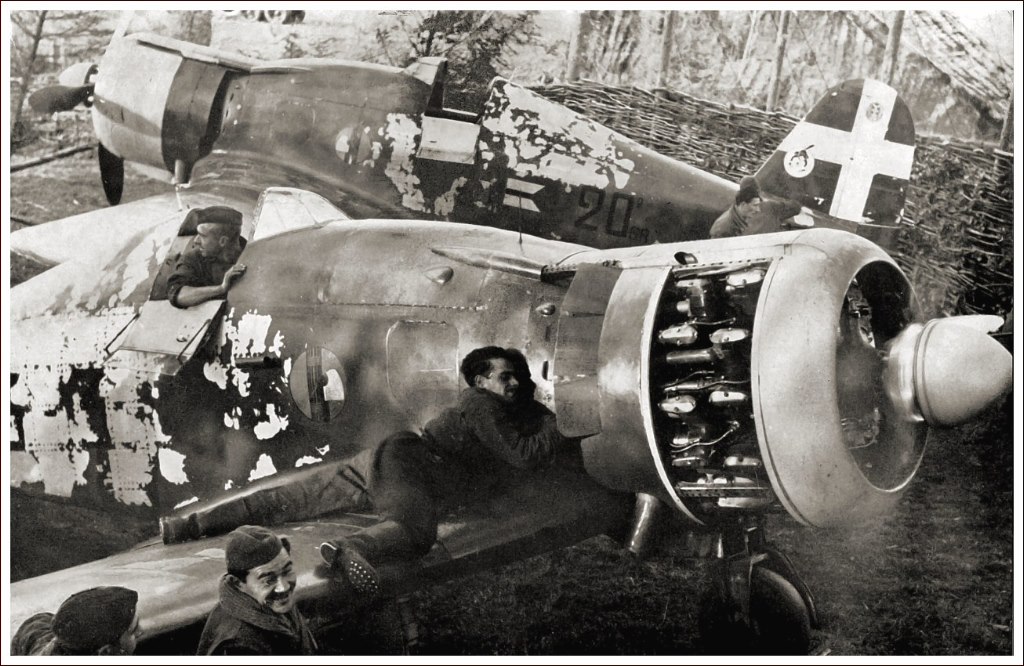
15/09/2017 Kawasaki Ki-61 "Hien", Japanese Army Air Force, Finemolds
When the Allied first encountered the Kawasaki Ki-61 „Hien“ it was the
cause of great confusion, as it was believed to be a design of German or
Italian origin. Indeed the Ki-61 (Allied codename “Tony”) was unique among
the Japanese fighter aircraft as it was the only mass-produced fighter
with an inline engine.
The Japanese aircraft industry at the time had no experience with
high-powered inline engines, so a German Engine, the DB 601 (used in the
Messerschmitt Bf109 and Bf110) was license-build as the Kawasaki Ha40.
Some modifications were made by the Kawasaki engineers, for example
reducing the weight of the engine by 30kg, which made construction of the
engine much more delicate, a cause of ongoing problems. The airframe of
the Ki-61 had some superficial similarities to the Bf 109, but was a
completely new design. Compared to a radial engine design, the inline
engine allowed for a much more aerodynamical and smaller nose section, and
therefore higher top speed. When the Ki-61 was introduced in 1942, it was
the fastest of all contemporay Japanese fighter aircraft (both Imperial
Japanese Navy and Army Air Force). In many ways, the Ki-61 had more
similarities with Western aircraft design: it had self-sealing fuel tanks
and build-in armor proctection. It lacked the maneuverabilty of the Zero
or the Ki-43, something the pilots complained as they were used to fly
very agile aircraft.
Initially, the usual teething problems aside, the Ki-61 was a surprising
threat to the Allied forces. It outclassed the P-40, and it´s sturdiness
made it much more difficult to destroy than the nimble and fragile Zeros
or Oscars. The engine however remained a big problem and reliability
issued could never be completely solved. It also meant that power upgrades
to the engine were almost impossible, and the Ki-61 was slowly becoming
underpowered as the war continued. In the last months of the war many
Ki-61 units were assigned to homeland defense, especially engaging the
high-flying B-29 bombers. The aging Ki-61 lacked high altitude performance
and could barely catch up with the bombers, so it was not unusual that
Ki-61 pilots tried ramming attacks against the bombers. These were not
considered “typical” Kamikaze attacks, but one of the Units assigned to
Homeland defense, the 244th Air Regiment, had a dedicated united
specialized in ramming attacks. Pilots in this squadron were expected to
fly ramming missions until they were wounded or killed.
The final development of the Ki-61 was the Ki-100, a modified airframe
with a radial engine instead of the inline engine. Only few units were
produced and although it was considered one of the best Japanese fighters
in the final stages of the war, it came to late to change anything.
This Ki-61 was flown by Cpt. Fumisuke Shono of the 244th Air Regiment,
based at Chofu AFB near Tokyo, in January/February 1945. It had the
typical markings of units assigned to Homeland defense. There are a few
photos of this aircraft avaiable, making it an interesting subject to
model. The Decals are from the kit, a newer one from Finemolds of Japan.
It is comparable to kits from Hasegawa or Tamiya, although slightly less
detailed. I like these Japanese kits in general, they are easy to assemble
and well engineered. That the instructions are mostly in Japanese is no
problem – a picture says more than 1000 words.
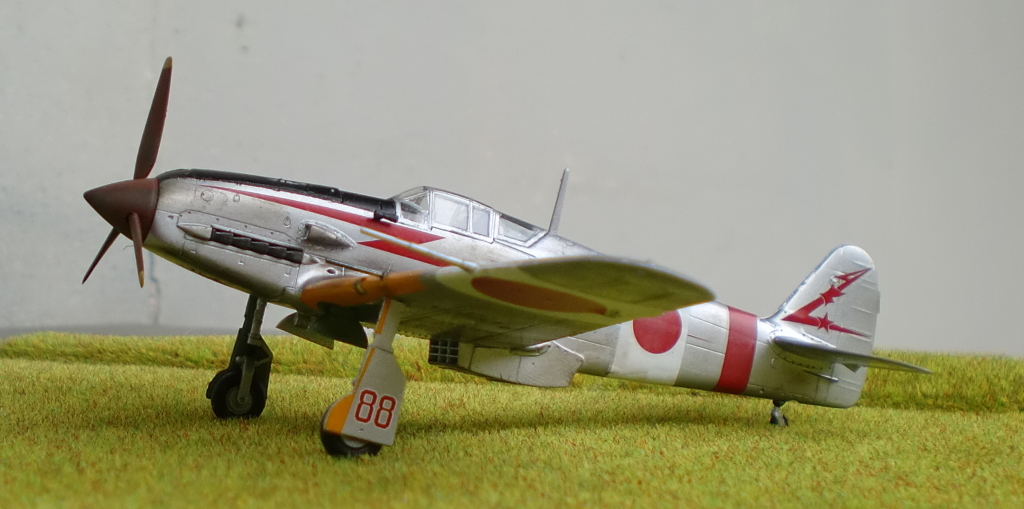
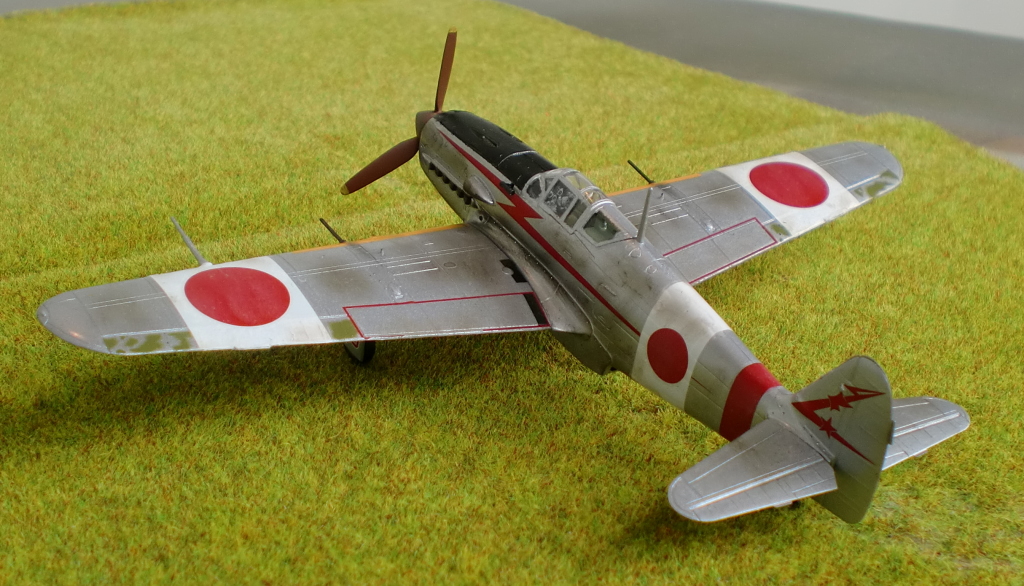
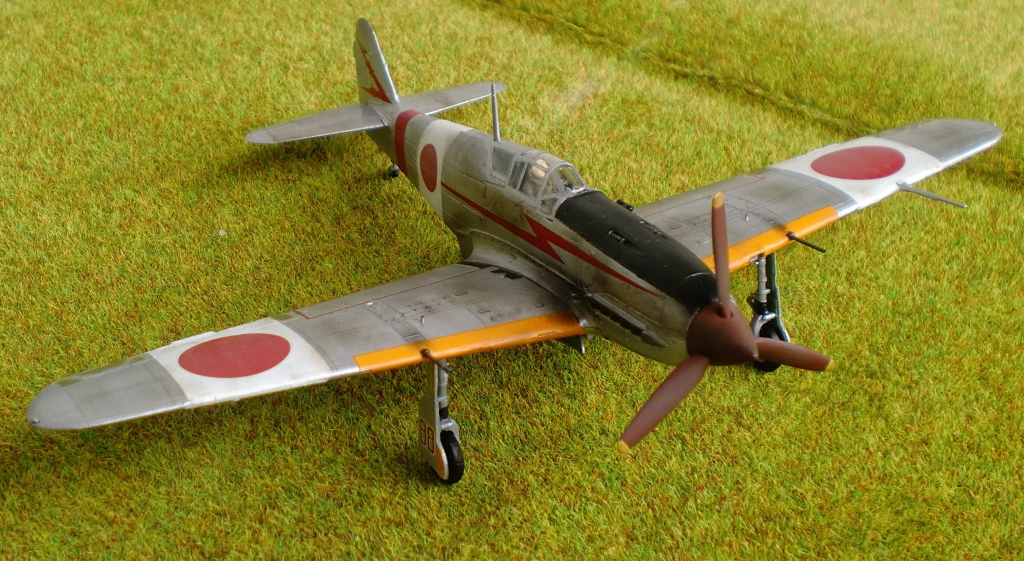
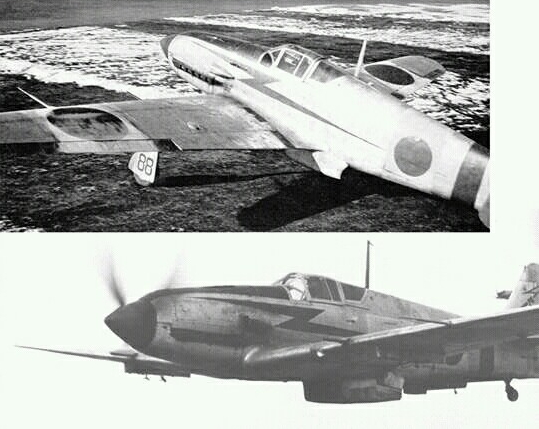
17/08/2017 Polikarpov Po-2/U2 Red Army Air Force, ICM Models
With estimated 30.000 planes build between 1928 and 1952 , the
Polikarpov Po-2 is one of the most produced aircraft of all time, and the
most produced biplane aircraft ever. An amazing history for a simple
aircraft that was basically designed as a trainer and crop duster aircraft
in the late 1920s. Nobody in their right mind would have thought this
aircraft (NATO reporting name “Mule”) could be used in any military role
except for liasion or courier duties in World War II. By this time, the
Po-2 was hopelessly outdated. However, the Soviets soon came up with a new
role for this aircraft, where it was well suited for: as a light night
bomber for nocturnal harrassment missions against German troops, some sort
of early psychological warfare.
The standard mission profile for Po-2 squads was to approach German troop
concentrations in the middle of the night, usually flying at treetop
level, and to make an unpowered gliding attack to drop the four attached
110lb bombs. Although the actual damage caused by this attacks were
usually minimal, the psychological effects could not be underestimated. It
prevented the German troops from sleeping, keeping them alerted and raised
the already high stress level of the soldiers. The Germans nicknamed the
Po-2 “Sewing machine” for its unnerving engine sound. From the air, the
Po-2 was rather difficult to attack, as it flew very low and slow; in fact
the top speed of the low-powered Po-2 was slightly slower than the stall
speed of a Bf 109 or Fw190; making it very hard to target. The greatest
danger for the Night bomber crews was AA fire. The all-wood design of the
Po-2 could catch fire easily and quite a lot Po-2 crews suffered gruesome
ends; especially as they did not carry parachutes to save weight.
This particular Po-2, “White 19” belonged to the 46th Tamansky GvNBAP
(Guards) in Spring 1945. The 46th Guards regiment was formed from the
588th Night Bomber regiment, the famous “Night Witches”. It was the only
all-female squadron during WWII (including pilots, navigators, mechanics
etc.). The Night Witches flew over 24.000 combat missions, sometimes 5-6
missions in a night (due to the low payload of the Po-2). The Night
Witches were highly decorated with several “Hero of the Soviet Union”
awards, including famous pilots like Rufina Gasheva, Natalya Meklin and
Irina Sebrova (who took part in 1008 missions). The inscription on this
Po-2 “White 19” is a dedication to fallen crew members: “To avenge our
comrades Tanja Makarova and Vera Belik !”
This kit is a new mould from Ukranian maker ICM, and as I expected, it was
quite detailled, delicate and challenging. ICM makes very fine details and
their moulding quality is good, I wish fitting and especially the
instructions would be better. With some patience great models can be made.
I did not do any rigging, as the basic construction was nervewracking
enough for me. Decals are from the kit.
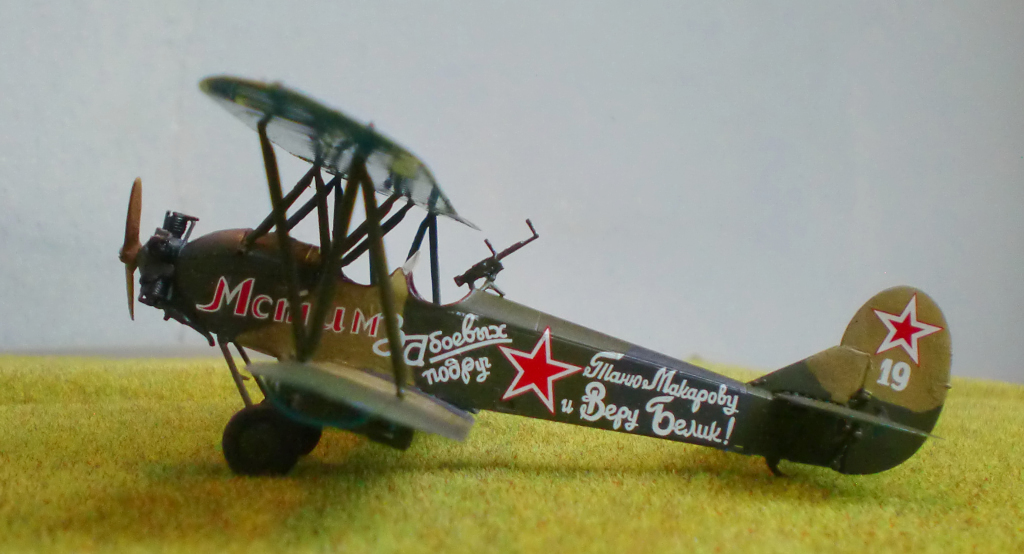
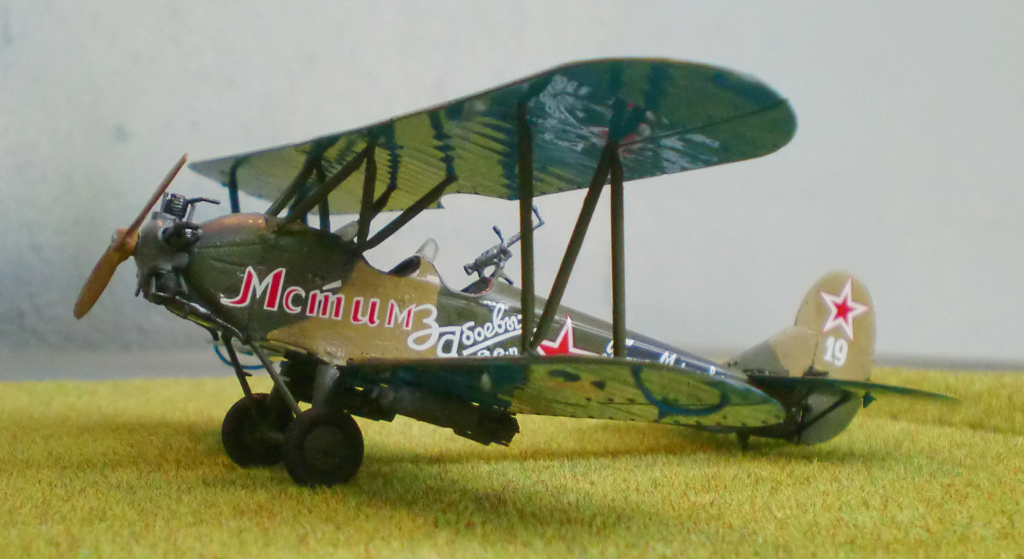
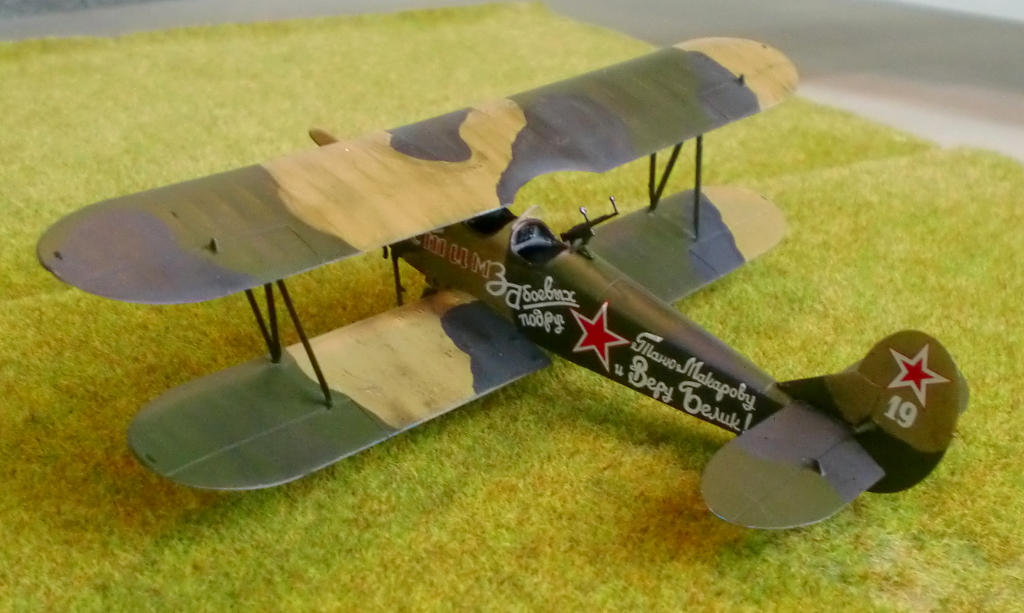
"White 19" dropping leaflets
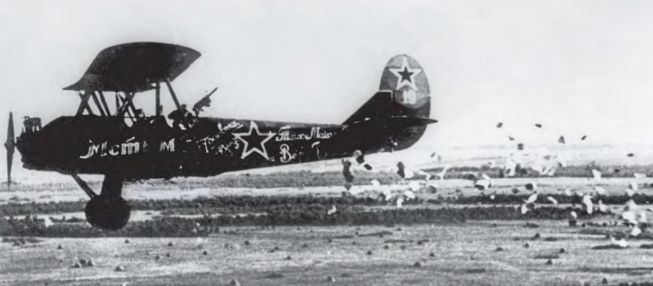
28/05/2017 Douglas TBD Devastator US Navy, Airfix
First flown in 1935 and entering service in 1937, the Douglas TBD
Devastator Torpedo Bomber was the most advanced US Navy aircraft of it´s
time, and probably the most modern plane of any Navy in the world. The
first monoplane aircraft design of the US Navy, it featured all-metal
construction and hydraulically folding wings, the first of it´s kind.
However, as the United States entered WWII, the TBD was already outdated,
and the successor design, the Grumman TBF Avenger, was already in a test
programme. Initially, the TBD could still hold up well, but it was the
climatic Battle of Midway that saw the demise of the TBD. Torpedo bombing
was already a very dangerous task, as it required a long, slow & straight
attack run against ships, making it an easy target for AA guns or enemy
fighters. At the end of the Pacific war, the Japanese had a loss rate of
almost 100% for their torpedo bombers. The Americans fared better, but
nevertheless the Battle of Midway was an desaster for the TBD, and ended
the career of this type. On June 4th, 1942, a total of 41 Devastators were
launched from three aircraft carriers against the Japanese fleet. Only six
made it back, with no torpedo hits recorded. All other aircraft were lost.
The USS Hornet was hit the worst, as no bomber of their Torpedo Squad
VT-8, consisting of 15 aircraft, returned. Only one crew member of VT-8,
pilot Ensign George Gay, could be rescued at sea a day later.
What was the reason for this disaster ? There were quite a few. Due to a
lack of coordination, most of the TBD´s lost contact with their fighter
escort, and attacked the Japanese carriers without protection. The TBD was
slow, hardly maneuverable and an easy target for the Zero fighters and AA
gunners. The American crews were relatively inexperienced, as most had
never launched a torpedo except for training, and the torpedo itself, the
Mark 13 aerial torpedo, was still unreliable at the time and prone for
running cold or sinking to early. Immediately after Midway, the remaining
Devastators were retired and relegated to training units. No aircraft (130
were build in total) survives on land today, but there are at least four
crashed but well preserved aircraft under water that could be salvaged and
restored one day.
This TBD Devastator, T-16 of VT-8 from USS Hornet, was flown by squadron
leader Lt.Cmdr. John C. Waldron and gunner/radioman Horace F. Dobbs, at
the Battle of Midway on June 4th, 1942. Waldron, known for his
navigationing skills, was able to detect the Japanese carrier group, and
although he had no fighter cover, decided to attack the carriers. All 15
Devastators of VT-8 were shot down and Waldron & Hobbs perished, however
their sacrifice had not been in vain. While the Zeros were pounding on the
TDBs, Douglas SBD dive bombers arrived at the scene and where able to
attack their targets almost unscathed, sinking three of the four Japanese
carriers, and helped changing the course of the Pacific War.
When it comes to Devastator kits in 1/72, one has the choice between newer
Czech short run kits or the very old Airfix moulding from the early 1970s.
I decided to build the Airfix kit, which is still good despite its age. A
few areas, like cockpit interior and engine are a bit weak on the details,
but overall the impression is quite good and the build was relatively
hassle-free. Decals are from Techmod, and while they are still a bit
temperamental, at least I did not require a second decal sheet this time !
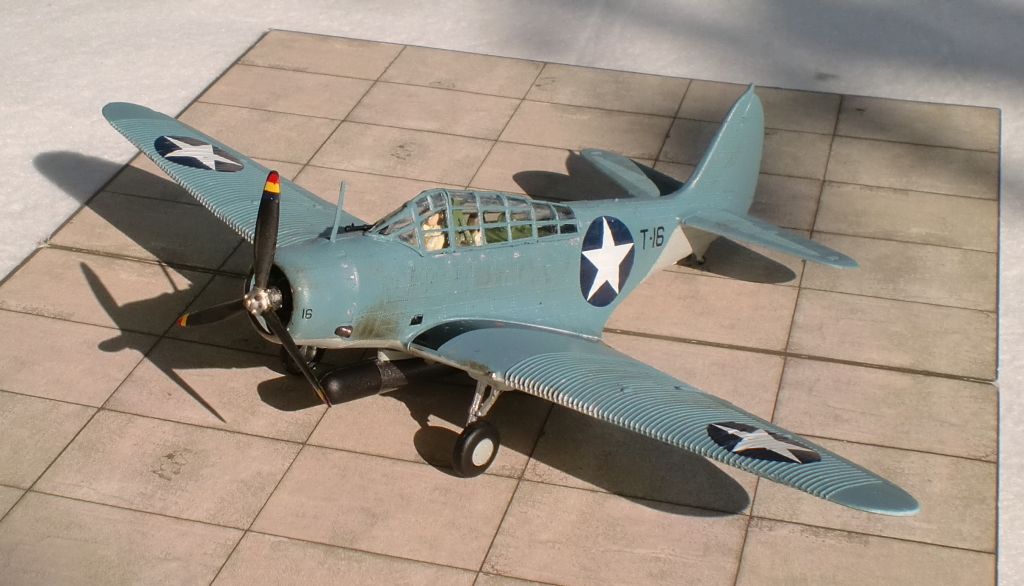
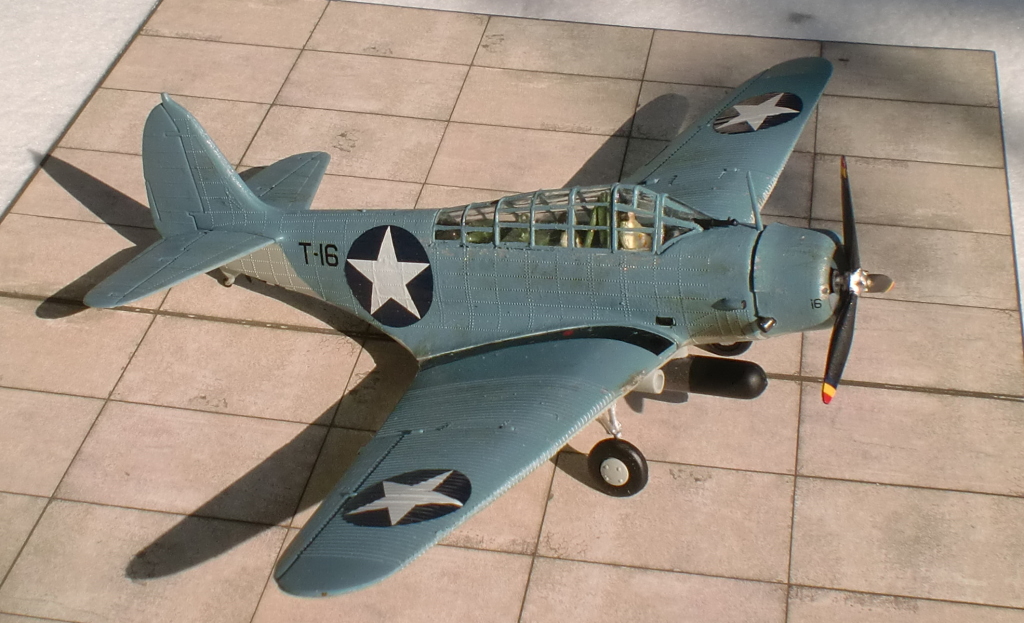
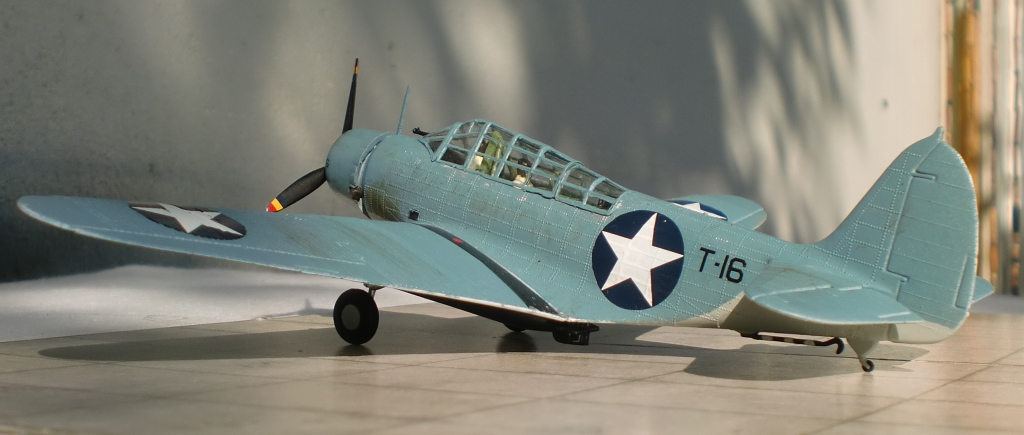
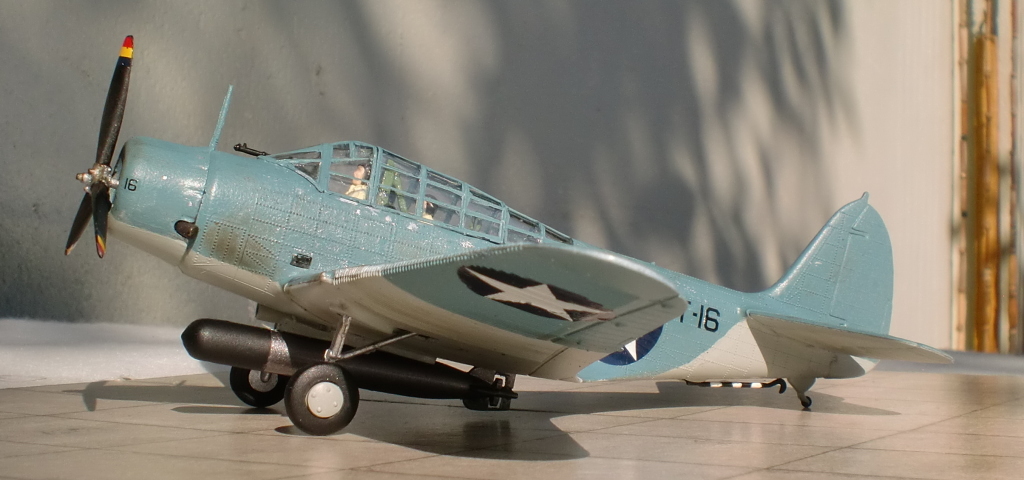
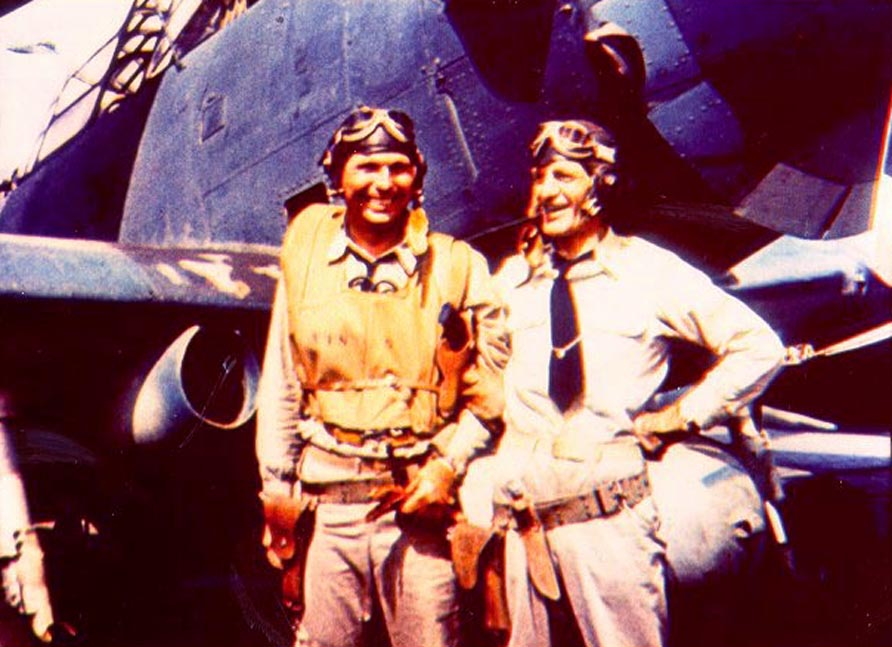
Waldron (right) and Hobbs
